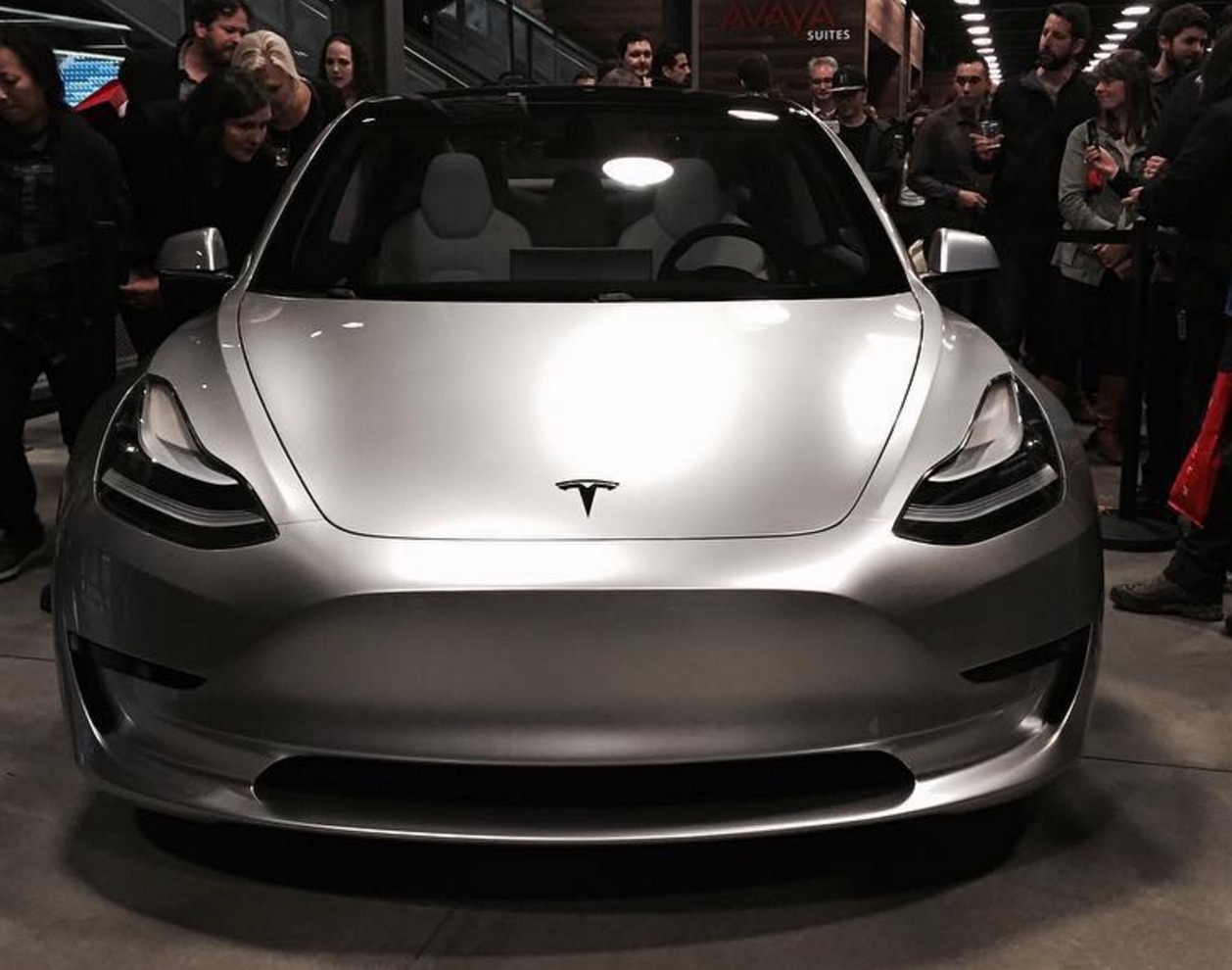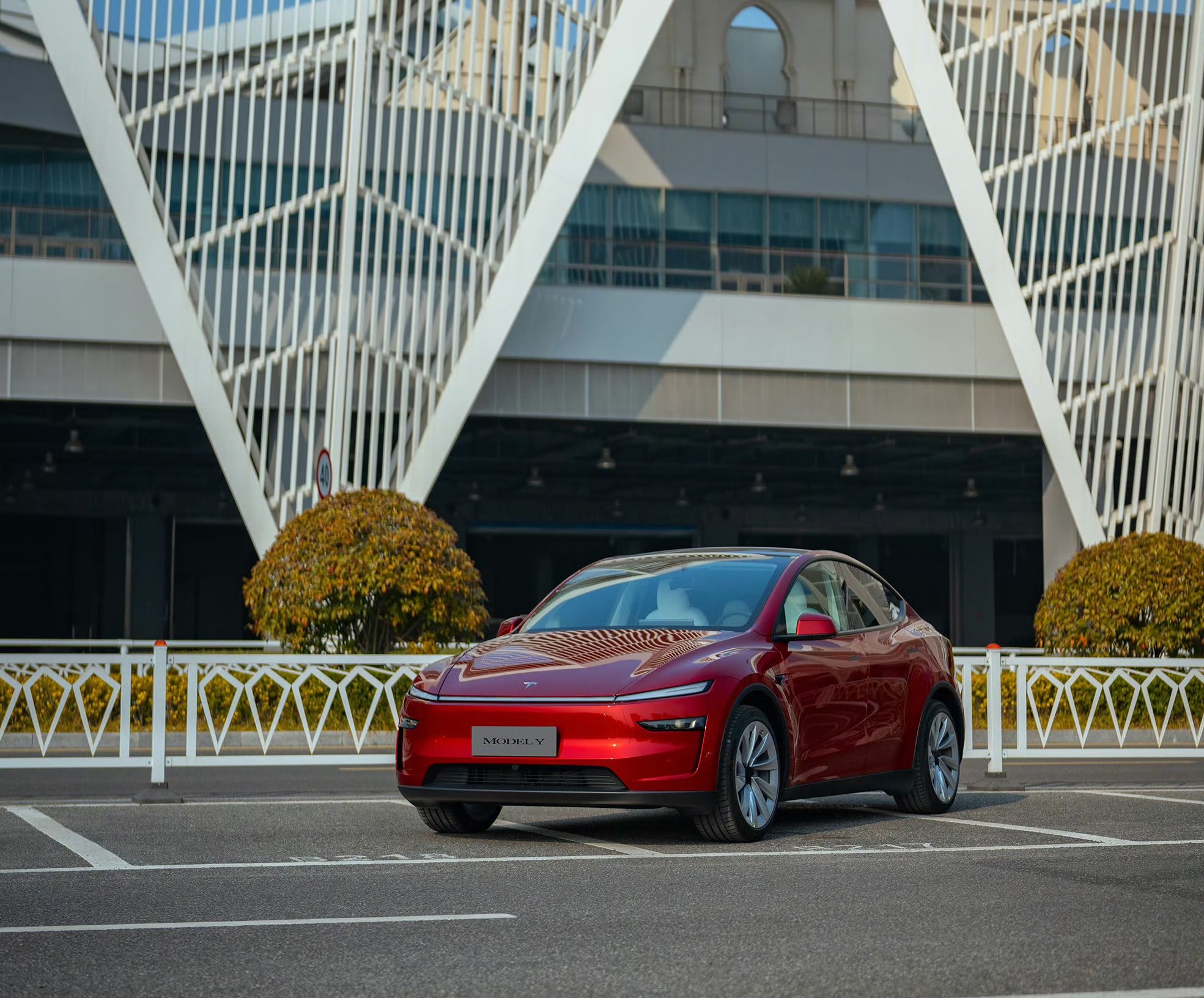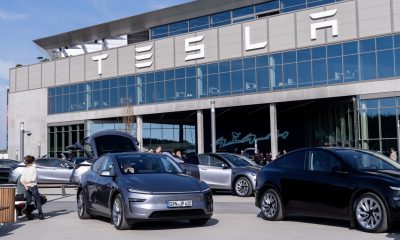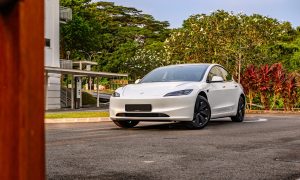News
Tesla’s Model 3 will be big news in 2017 and why you should care

The Tesla Model 3 will reach a pinnacle of excitement and hype in 2017, with projected international pricing and production scheduled to begin mid-year. These are important times for Tesla, as the Model 3 is the vehicle that CEO Elon Musk envisioned with his original Master Plan.
A new audience for Tesla
A minimum of 215 miles of range per single charge. Under 6 seconds: Zero to 60 mph. Seating for 5 adults. Designed to achieve 5-star safety rating. Autopilot hardware. Supercharging capable. Musk has said that “you will not be able to buy a better car for $35,000,” while also indicating that options will bring the typical price of a Model 3 to about $42,000.
All indications are that the Model 3 will be a four-door sedan that’s a bit smaller than the Tesla Model S. Likely comparable cars are the BMW 3 Series, Jaguar XE, and Mercedes C-Class. Those models are no mid-range Hondas or Hyundais, no Nissan Versas or Chevy Sparks with base prices under $15,000. So the Model 3 will have an upscale audience but not the mass public— at least not yet.
So, yes, it’s nice to see another Tesla vehicle coming to market, but aside of that, what’s so significant about the Model 3?
The Tesla Master Plan as embodied in the Model 3
Over a decade ago, Musk announced that Tesla’s long term plan was to build a wide range of vehicles, including affordably priced family cars. This was part of a larger goal to help expedite the move from a “mine-and-burn hydrocarbon economy towards a solar electric economy.” Most electricity is produced at an electric power plant where some fuel source, such as coal, oil, natural gas, or nuclear energy, produces heat that boils water to create steam. The steam, under high pressure, is used to spin a turbine. Centralized electricity, then, frequently perpetuates reliance on fossil fuels. Recent anthropogenic emissions of greenhouse gases from fossil fuels are the highest in history, and climate changes have had widespread impacts on human and natural systems. When we reduce our reliance on fossil-fuels, we can decrease the proportion of greenhouse gases in the atmosphere. Human activity, after all, has contributed to anthropogenic climate change.
What’s the Model 3 got to do with all this?
The important distinction to note here is between electric vehicles powered from a centralized grid and electric vehicles powered by decentralized solar energy. When combined with a modestly sized and priced solar panel from SolarCity — the Tesla-owned solar service provider — a Model 3 consumer can draw upon decentralized energy. When energy is produced close to where it will be used, rather than at a large plant elsewhere and sent through the national grid, a Tesla consumer reduces carbon emissions and contributes to a greener climate and economy.
The Model 3 will bring the capacity to become relatively energy independent to a whole new segment of society. Tesla’s reconceptualization of a transportation and electricity generation linkage will become increasingly apparent and important in 2017 as the Model 3 comes closer to our city streets.
The triad of Model 3 electric vehicle, solar roof, and Powerwall 2
In addition to ramping up Model 3 production, Tesla’s engineering teams will work in conjunction with Panasonic to set manufacturing at SolarCity’s Buffalo plant in 2017. That is the starting point for SolarCity solar roof products. The result? Solar cells, solar modules, and solar roof tiles.
Here’s how it works. A residence can capture the sun’s free, abundant energy source through rooftop solar tiles, turning sunlight into electricity for immediate use. Tesla’s solar roof tiles will be designed in four different and very appealing styles. Once the Jones family gets these solar roof tiles, so, too, will the Smiths want them. You see where this is going…
And there’s more to the solar roof tiles than merely converting sunlight. That sunlight-turned-electricity can be stored in a Powerwall 2 home battery pack. In early 2017, Tesla will initiate the first deliveries and installations of the Powerwall 2, which is being produced at the Gigafactory in Nevada. The Powerwall 2 can power an average two-bedroom home for a full day.
It can also be used to fire up your Model 3.
So, let’s review. Solar produces zero carbon emissions and reduces dependence on fossil fuels. The Model 3 electric vehicle is priced to meet the needs of an entirely new market. That market will be able to use solar roof tiles to turn sunlight into electricity, and the Powerwall 2 will store electricity that can, in turn, power up the Model 3. By matching Tesla solar roof tiles with the Powerwall to power your Model 3, you can extend the environmental and cost benefits of solar energy.
This is big stuff, and it’s clearly been under-reported. The Model 3 has the capacity to have huge consequences on the way the typical U.S. consumer considers electricity generation and transportation alternative. It’s Tesla in the lead, all over again.
News
Tesla upgrades Model 3 and Model Y in China, hikes price for long-range sedan
Tesla’s long-range Model 3 now comes with a higher CLTC-rated range of 753 km (468 miles).

Tesla has rolled out a series of quiet upgrades to its Model 3 and Model Y in China, enhancing range and performance for long-range variants. The updates come with a price hike for the Model 3 Long Range All-Wheel Drive, which now costs RMB 285,500 (about $39,300), up RMB 10,000 ($1,400) from the previous price.
Model 3 gets acceleration boost, extended range
Tesla’s long-range Model 3 now comes with a higher CLTC-rated range of 753 km (468 miles), up from 713 km (443 miles), and a faster 0–100 km/h acceleration time of 3.8 seconds, down from 4.4 seconds. These changes suggest that Tesla has bundled the previously optional Acceleration Boost for the Model 3, once priced at RMB 14,100 ($1,968), as a standard feature.
Delivery wait times for the long-range Model 3 have also been shortened, from 3–5 weeks to just 1–3 weeks, as per CNEV Post. No changes were made to the entry-level RWD or Performance versions, which retain their RMB 235,500 and RMB 339,500 price points, respectively. Wait times for those trims also remain at 1–3 weeks and 8–10 weeks.
Model Y range increases, pricing holds steady
The Model Y Long Range has also seen its CLTC-rated range increase from 719 km (447 miles) to 750 km (466 miles), though its price remains unchanged at RMB 313,500 ($43,759). The model maintains a 0–100 km/h time of 4.3 seconds.
Tesla also updated delivery times for the Model Y lineup. The Long Range variant now shows a wait time of 1–3 weeks, an improvement from the previous 3–5 weeks. The entry-level RWD version maintained its starting price of RMB 263,500, though its delivery window is now shorter at 2–4 weeks.
Tesla continues to offer several purchase incentives in China, including an RMB 8,000 discount for select paint options, an RMB 8,000 insurance subsidy, and five years of interest-free financing for eligible variants.
News
Tesla China registrations hit 20.7k in final week of June, highest in Q2
The final week of June stands as the second-highest of 2025 and the best-performing week of the quarter.

Tesla China recorded 20,680 domestic insurance registrations during the week of June 23–29, marking its highest weekly total in the second quarter of 2025.
The figure represents a 49.3% increase from the previous week and a 46.7% improvement year-over-year, suggesting growing domestic momentum for the electric vehicle maker in Q2’s final weeks.
Q2 closes with a boost despite year-on-year dip
The strong week helped lift Tesla’s performance for the quarter, though Q2 totals remain down 4.6% quarter-over-quarter and 10.9% year-over-year, according to industry watchers. Despite these declines, the last week of June stands as the second-highest of 2025 and the best-performing week of the quarter.
As per industry watchers, Tesla China delivered 15,210 New Model Y units last week, the highest weekly tally since the vehicle’s launch. The Model 3 followed with 5,470 deliveries during the same period. Tesla’s full June and Q2 sales data for China are expected to be released by the China Passenger Car Association (CPCA) in the coming days.
Tesla China and minor Model 3 and Model Y updates
Tesla manufactures the Model 3 and Model Y at its Shanghai facility, which provides vehicles to both domestic and international markets. In May, the automaker reported 38,588 retail sales in China, down 30.1% year-over-year but up 34.3% from April. Exports from Shanghai totaled 23,074 units in May, a 32.9% improvement from the previous year but down 22.4% month-over-month, as noted in a CNEV Post report.
Earlier this week, Tesla introduced minor updates to the long-range versions of the Model 3 and Model Y in China. The refreshed Model 3 saw a modest price increase, while pricing for the updated Model Y Long Range variant remained unchanged. These adjustments come as Tesla continues refining its China lineup amid shifting local demand and increased competition from domestic brands.
Elon Musk
Tesla investors will be shocked by Jim Cramer’s latest assessment
Jim Cramer is now speaking positively about Tesla, especially in terms of its Robotaxi performance and its perception as a company.

Tesla investors will be shocked by analyst Jim Cramer’s latest assessment of the company.
When it comes to Tesla analysts, many of them are consistent. The bulls usually stay the bulls, and the bears usually stay the bears. The notable analysts on each side are Dan Ives and Adam Jonas for the bulls, and Gordon Johnson for the bears.
Jim Cramer is one analyst who does not necessarily fit this mold. Cramer, who hosts CNBC’s Mad Money, has switched his opinion on Tesla stock (NASDAQ: TSLA) many times.
He has been bullish, like he was when he said the stock was a “sleeping giant” two years ago, and he has been bearish, like he was when he said there was “nothing magnificent” about the company just a few months ago.
Now, he is back to being a bull.
Cramer’s comments were related to two key points: how NVIDIA CEO Jensen Huang describes Tesla after working closely with the Company through their transactions, and how it is not a car company, as well as the recent launch of the Robotaxi fleet.
Jensen Huang’s Tesla Narrative
Cramer says that the narrative on quarterly and annual deliveries is overblown, and those who continue to worry about Tesla’s performance on that metric are misled.
“It’s not a car company,” he said.
He went on to say that people like Huang speak highly of Tesla, and that should be enough to deter any true skepticism:
“I believe what Musk says cause Musk is working with Jensen and Jensen’s telling me what’s happening on the other side is pretty amazing.”
Tesla self-driving development gets huge compliment from NVIDIA CEO
Robotaxi Launch
Many media outlets are being extremely negative regarding the early rollout of Tesla’s Robotaxi platform in Austin, Texas.
There have been a handful of small issues, but nothing significant. Cramer says that humans make mistakes in vehicles too, yet, when Tesla’s test phase of the Robotaxi does it, it’s front page news and needs to be magnified.
He said:
“Look, I mean, drivers make mistakes all the time. Why should we hold Tesla to a standard where there can be no mistakes?”
It’s refreshing to hear Cramer speak logically about the Robotaxi fleet, as Tesla has taken every measure to ensure there are no mishaps. There are safety monitors in the passenger seat, and the area of travel is limited, confined to a small number of people.
Tesla is still improving and hopes to remove teleoperators and safety monitors slowly, as CEO Elon Musk said more freedom could be granted within one or two months.
-

 Elon Musk20 hours ago
Elon Musk20 hours agoTesla investors will be shocked by Jim Cramer’s latest assessment
-

 News6 days ago
News6 days agoTesla Robotaxi’s biggest challenge seems to be this one thing
-

 News2 weeks ago
News2 weeks agoTesla confirms massive hardware change for autonomy improvement
-

 News2 weeks ago
News2 weeks agoTesla’s Grok integration will be more realistic with this cool feature
-

 Elon Musk2 weeks ago
Elon Musk2 weeks agoElon Musk slams Bloomberg’s shocking xAI cash burn claims
-

 News2 weeks ago
News2 weeks agoTesla China roars back with highest vehicle registrations this Q2 so far
-

 News2 weeks ago
News2 weeks agoTexas lawmakers urge Tesla to delay Austin robotaxi launch to September
-

 News2 weeks ago
News2 weeks agoTesla dominates Cars.com’s Made in America Index with clean sweep



















